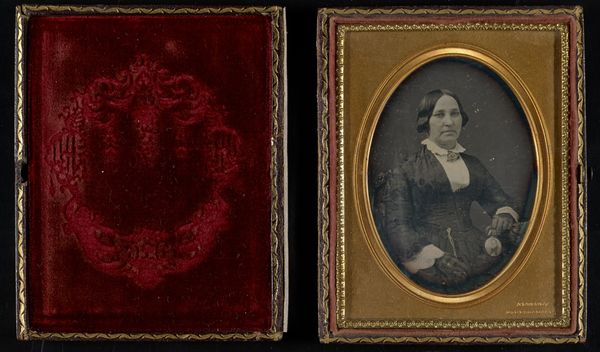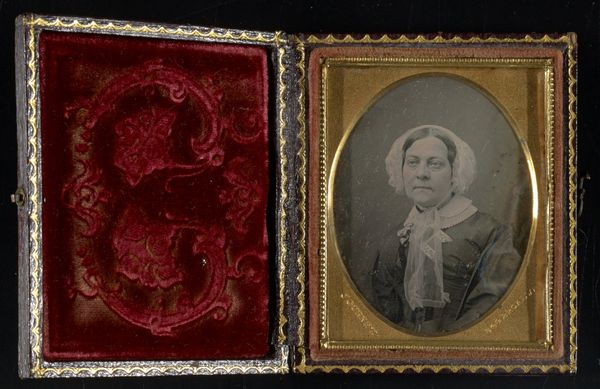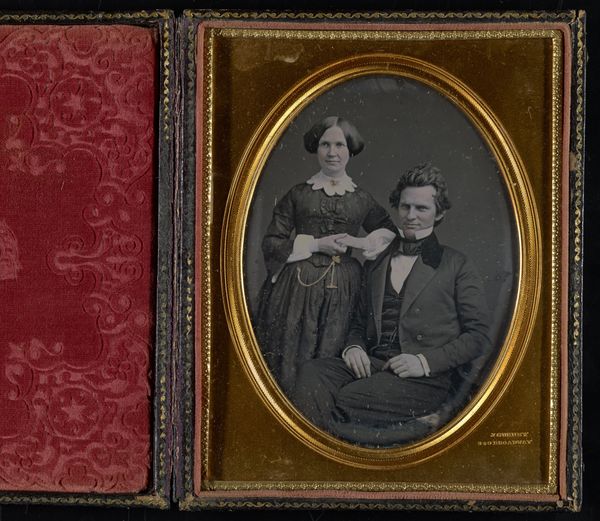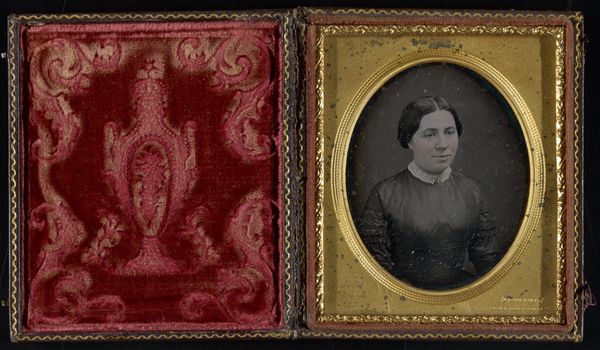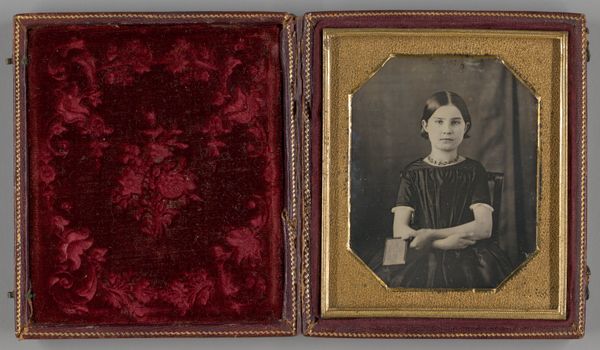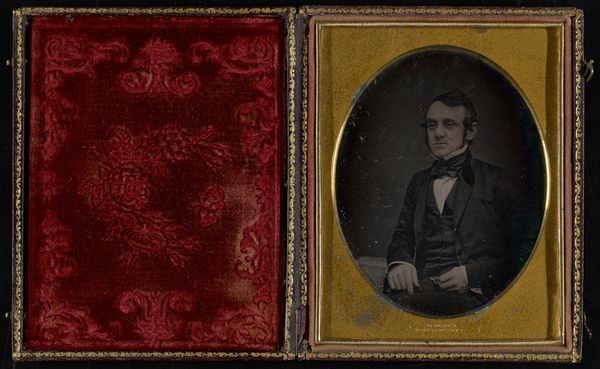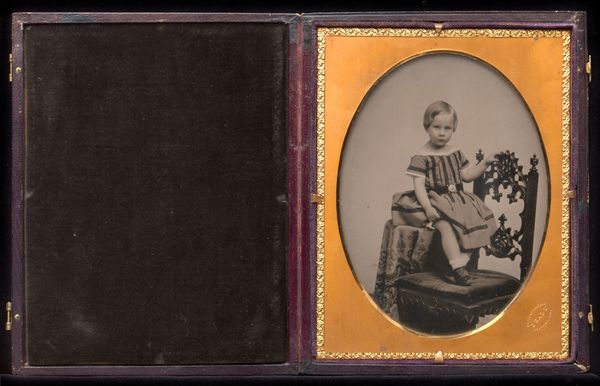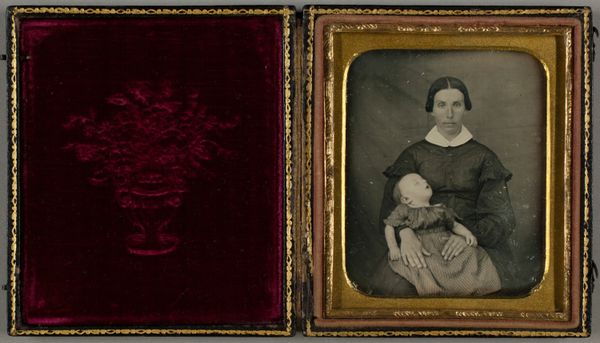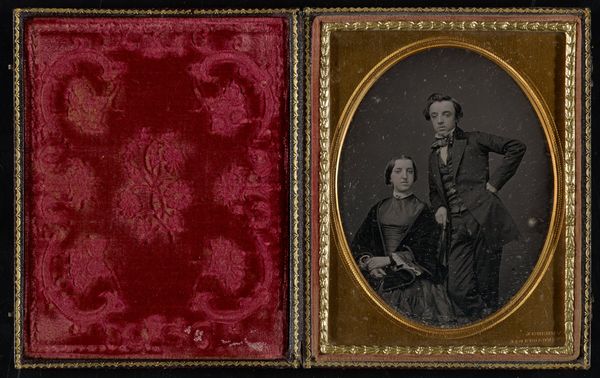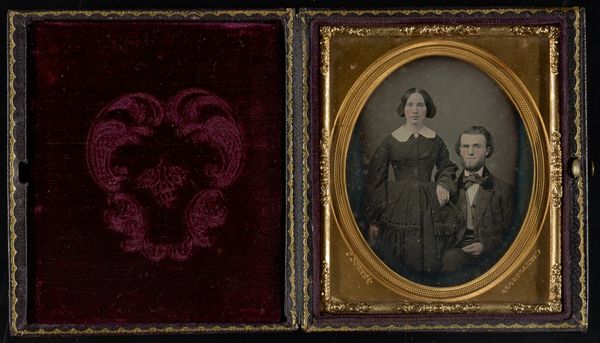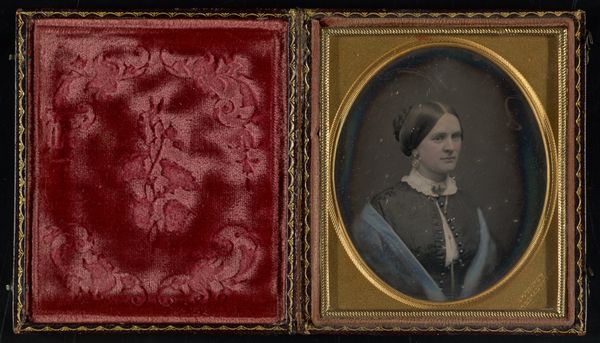![Untitled [portrait of a woman seated in the 'Gurney chair'] by Jeremiah Gurney](/_next/image?url=https%3A%2F%2Fd2w8kbdekdi1gv.cloudfront.net%2FeyJidWNrZXQiOiAiYXJ0ZXJhLWltYWdlcy1idWNrZXQiLCAia2V5IjogImFydHdvcmtzL2Q1NzZiNDkyLWNjOTUtNDU3Zi05YjdkLTY1NDJmMjk5YzYzMi9kNTc2YjQ5Mi1jYzk1LTQ1N2YtOWI3ZC02NTQyZjI5OWM2MzJfZnVsbC5qcGciLCAiZWRpdHMiOiB7InJlc2l6ZSI6IHsid2lkdGgiOiAxOTIwLCAiaGVpZ2h0IjogMTkyMCwgImZpdCI6ICJpbnNpZGUifX19&w=3840&q=75)
Untitled [portrait of a woman seated in the 'Gurney chair'] 1852 - 1858
0:00
0:00
daguerreotype, photography
#
portrait
#
sculpture
#
daguerreotype
#
photography
#
united-states
#
genre-painting
#
decorative art
Dimensions: 4 1/4 x 3 1/4 in. (10.8 x 8.26 cm) (image)4 11/16 x 3 11/16 x 3/4 in. (11.91 x 9.37 x 1.91 cm) (mount)
Copyright: Public Domain
This daguerreotype of an unknown woman was made by Jeremiah Gurney in the United States. The portrait presents some fascinating insights into the way photography functioned in 19th-century social life. Consider the trappings of wealth and status that are displayed in the portrait: the ornate ‘Gurney chair’, the sitter’s elaborate dress, and the opulent case. These elements speak to the growing middle class in America and their desire to participate in visual culture. Photography studios such as Gurney’s democratized portraiture, previously reserved for the wealthy elite. But this democratization came at a price. Daguerreotypes like this one reinforced existing social hierarchies and gender norms. The woman’s passive pose and somber expression reflect the restrictive roles assigned to women at the time. To fully understand this image, one might consult period publications, studio records, and social histories. By situating the daguerreotype within its historical context, we can understand how photography shaped and reflected the social structures of its time.
Comments
No comments
Be the first to comment and join the conversation on the ultimate creative platform.
